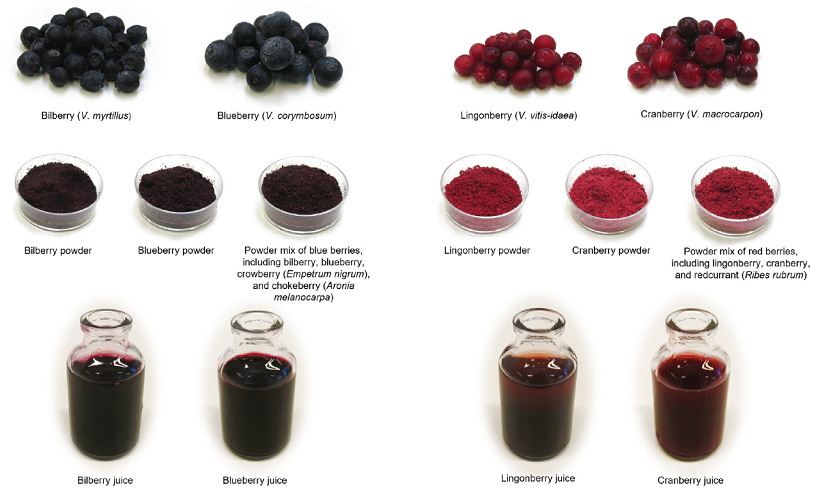Berries represent one of the most important and high-valued group of modernday health-beneficial “superfoods” whose dietary consumption has been recognized to be beneficial for human health for a long time. In addition to being delicious, berries are rich in nutrients, vitamins, and several bioactive compounds, including carotenoids, flavonoids, phenolic acids, and hydrolysable tannins. However, due to their high value, berries and berry-based products are often subject to fraudulent adulteration, commonly for economical gain, but also unintentionally due tomisidentification of species. Deliberate adulteration often comprises the substitution of high-value berries with lower value counterparts and mislabeling of product contents. As adulteration is deceptive toward customers and presents a risk for public health, food authentication through different methods is applied as a countermeasure. Although many authentication methods have been developed in terms of fast, sensitive, reliable, and low-cost analysis and have been applied in the authentication of a myriad of food products and species, their application on berries and berry-based products is still limited. The present review provides an overview of the development and application of analytical chemistry methods, such as isotope ratio analysis, liquid and gas chromatography, spectroscopy, aswell asDNA-based methods and electronic sensors, for the authentication of berries and berry-based food products. We provide an overview of the earlier use and recent advances of these methods, as well as discuss the advances and drawbacks related to their application.
KEYWORDS
berries, chromatography, DNA barcoding, food authentication, spectroscopy

